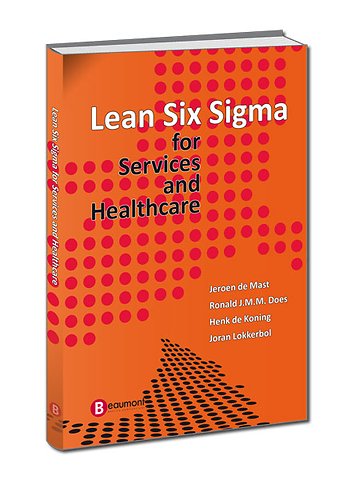



Jeroen de Mast is professor of Data-Driven Business Innovation at the Amsterdam Business School.
Meer over de auteursLean Six Sigma for Service and Healthcare
Gebonden Engels 2012 2e druk 9789079452002Samenvatting
The twentieth century saw an incredible development of professional organizations. Apart from the impact of technological progress, innovations in management structures and methods have resulted in the highly productive organizations we know today. When the race for outperforming competitors on quality and efficiency gained momentum, companies started to copy each other’s best practices.
Consultants and management gurus quickly jumped in and started giving names to these methods: total quality management, just-in-time, business process reengineering, statistical process control, quality circles, lean manufacturing, continuous improvement, etcetera. Time has singled out the methods, principles and approaches that really added value. While most approaches have been presented as panaceas at one time or another, time has shown that they are in fact complementary.
Lean Six Sigma is not a hype; it is built on principles and methods that have proven themselves over time. It has incorporated the most effective approaches and integrated them into a full program. It offers a management structure for organizing continuous improvement of routine tasks, such as manufacturing, accounting, nursing, sales, and other work that is done routinely. Further, it offers a method and tools for carrying out improvement projects effectively.
Benefits
- Improvement and redesign of routine tasks (manufacturing processes, service delivery, marketing, healthcare procedures, sales, et cetera).
- Superior quality and efficiency.
Strategic value
- Cost advantages: superior productivity and equipment utilization, avoidance of unnecessary capital expenditure, working capital reduction.
- Advantages derived from superior customer satisfaction: reduced price sensitivity, growth of revenue or market share.
- Competence building in manufacturing or service delivery.
- Competence building in continuous and company-wide improvement and innovation.
Method
- Professional and science-based problem solving.
- Precise and quantitative problem definition.
- Data-based diagnosis.
- Innovative generation of new ideas.
- Field-testing of ideas before implementation.
Organization
- Program management consisting of a Lean Six Sigma director, program managers (daily management), and Lean Six Sigma Master Black Belts (knowledge resources).
- Project management consisting of a Champion (project owner) and a Black Belt or Green Belt (project leader).
- Team members: experts, shop floor personnel.
Acknowledging that process improvement requires process specific knowledge and acceptance by the shop floor, Lean Six Sigma favors project leaders from the line organization to staff personnel or external consultants. Given the importance of the strategic focus and integration of the method, Lean Six Sigma prescribes that projects are monitored and reviewed by Champions and program management.
Specificaties
Lezersrecensies
Over Ronald Does
Anderen die dit boek kochten, kochten ook
Rubrieken
- advisering
- algemeen management
- coaching en trainen
- communicatie en media
- economie
- financieel management
- inkoop en logistiek
- internet en social media
- it-management / ict
- juridisch
- leiderschap
- marketing
- mens en maatschappij
- non-profit
- ondernemen
- organisatiekunde
- personal finance
- personeelsmanagement
- persoonlijke effectiviteit
- projectmanagement
- psychologie
- reclame en verkoop
- strategisch management
- verandermanagement
- werk en loopbaan





